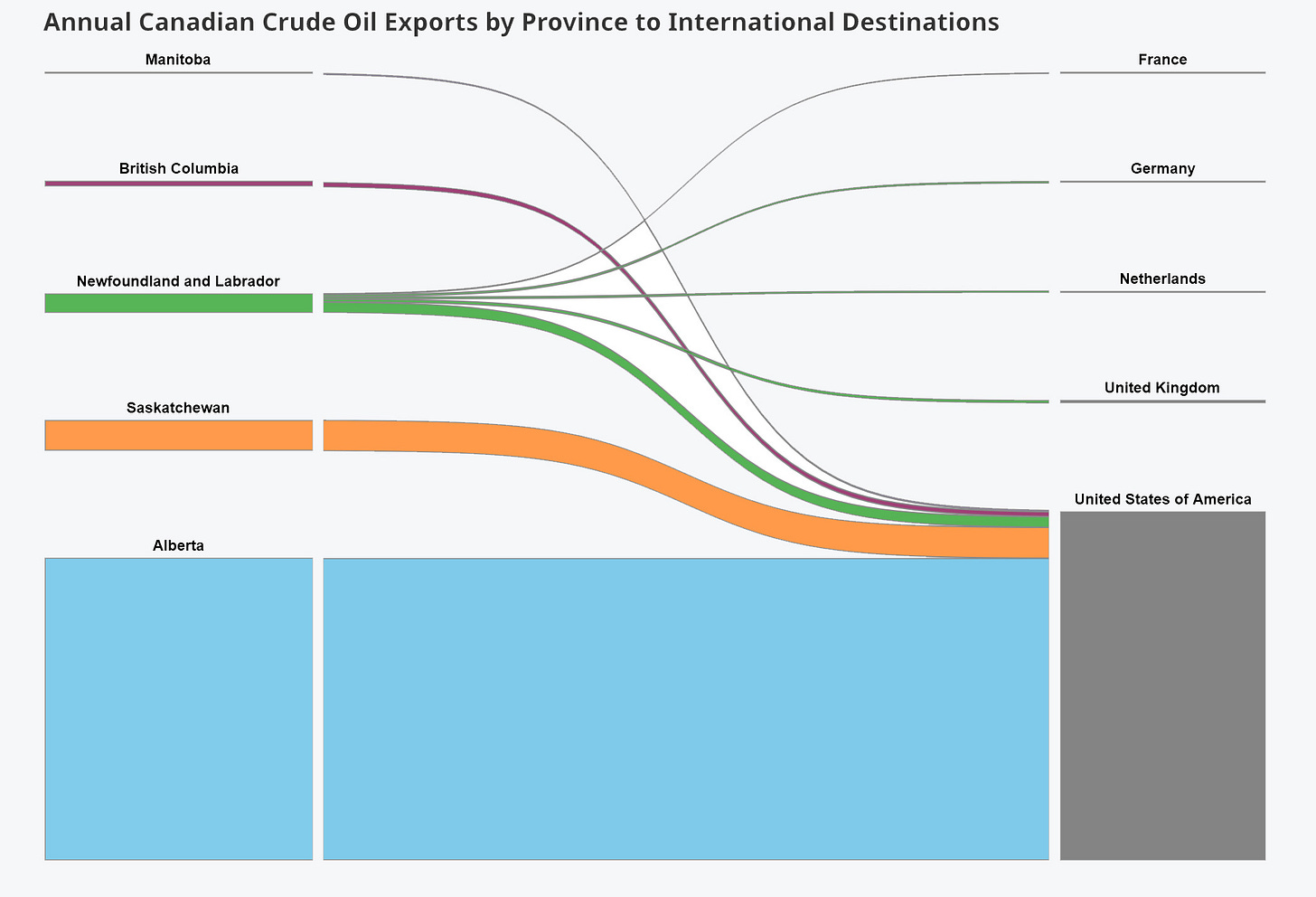The Fix Is In
Trump, Carney, Smith, and the future of North American energy.
“If you don't deal with your demons, they will deal with you, and it's gonna hurt.” – Nikki Sixx
Each year, over a million visitors make the trek to Calgary, Alberta, to attend “The Greatest Outdoor eShow on Earth.” The Calgary Stampede is a ten-day celebration of Western Canadian culture, featuring rodeo competitions, exhibitions, chuckwagon races, concerts, and an appearance from the Stampede Princess. Free pancake breakfasts are often available around the city, while mini donuts, corn dogs, barbecue ribs, brisket, and creative poutines are served from various food trucks and midway stands. Beer is the beverage of choice, with millions of pints served each year.
If this all seems, well, rather American, it’s because it practically is. The event was conceived in 1912 by an American trick roper, Guy Weadick, who ventured north in the wave of US immigrants lured to Alberta by a government eager to welcome them. During a 15-year period, “approximately 82,000 Americans arrived in the province, and by 1916 those of American birth constituted nearly 19% of the total population.” The impact on the development of Albertan politics over the next century was profound:
“Characteristics assigned to America's classical liberal ideology–rugged individualism, market capitalism, egalitarianism in the sense of equality of opportunity, and fierce hostility toward centralized federalism and socialism–are particularly appropriate for fathoming Alberta's political culture… Alberta's early American settlers were pivotal in shaping Alberta's political culture and…Albertans have demonstrated a particular affinity for American political ideas and movements.”
Given this history—and the fact that the province is home to the majority of the Western Canada Sedimentary Basin—it is perhaps unsurprising that Alberta has become the Texas of Canadian energy. Alberta’s energy prowess also means that the person who occupies its premiership holds outsized importance for global commodity investors. The current premier, Danielle Smith, is among the most energy-aware politicians in the Western world, undoubtedly shaped by her time at the Fraser Institute while working on her economics degree.
Despite their kinship, Texas and Alberta differ in one crucial respect: Texas boasts hundreds of miles of coastline and deep-water ports, while Alberta is landlocked. Worse still, reaching the Pacific Ocean from Alberta requires crossing the Rocky Mountains—an arduous route that severely limits off-take logistics. With a thousand miles of largely empty prairie to the east, the province is left with little choice but to send its product south to the US for refining:
Confronting this strategic weakness has long been a priority for Alberta’s political class—a challenge made more urgent by President Trump’s tariff maelstrom. While Premier Smith is credited with successfully lobbying Trump’s inner circle to carve out an exception for Canadian energy on Liberation Day, we suspect a far grander and more consequential bargain is not only in motion, but effectively already sealed.
Having successfully predicted Mark Carney’s transformation from globalist banker to incumbent Prime Minister and electoral front-runner (before he was even a contract on Polymarket), we return now to posit that much of what is portrayed in contemporary legacy media outlets is mere theater. Let’s peek behind the curtain and illuminate a few more predictions about the future of Alberta’s energy.



